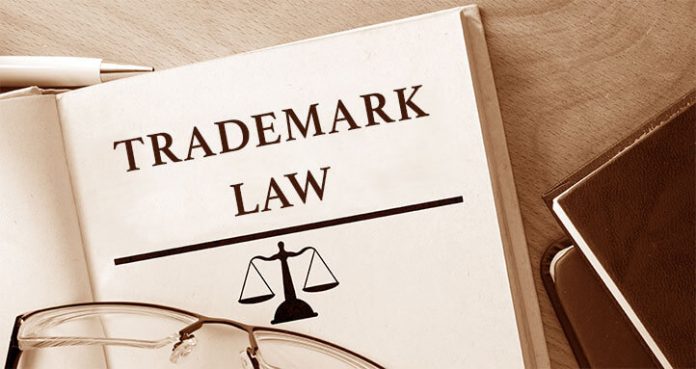This article is written by Devita pursuing Certificate Course in Intellectual Property Law and Prosecution from LawSikho.com.
Table of Contents
Introduction
In recent times, the squatting of trademarks and registering of identical and/or deceptively similar trademarks has become an issue for the registered and prior users of the trademarks. Any application consisting of a trademark filed for registration that is identical and deceptively similar to an already registered trademark to trade upon goodwill and reputation amounts to bad faith.
What does bad faith consist of
In the Trade Marks Act, 1999 no proper definition has been provided for bad faith. However, it has got a small mention in Section 11(10) (ii) qualifying as one of the relative grounds for refusal of trademark registration. Also, in various cases the court has attempted to define bad faith:
In the case of Gromax Plasticulture Ltd v Don & Low Nonwovens Ltd, the court laid down that, “Bad faith includes dishonesty and behaviour which falls short of the standards of acceptable commercial behaviour observed by reasonable and experienced men in the particular area being examined”.
The Delhi High Court in Manish Vij vs. Indira Chugh has defined bad faith as something that does not merely imply bad judgment but “the conscious doing of a wrong with a dishonest purpose.” Interestingly, despite not being defined in the statute, bad faith is an absolute ground for invalidity.
Considering the above-mentioned case, following are the factors that are likely to indicate bad faith:
-
Applying for a trademark that is already in use by some other person or company
It is the most common factor that is to be assessed before applying for a trademark. If an identical or deceptively trademark is applied despite knowing about the prior use then it amounts to bad faith.
-
When the applicant is very well aware that the trademark is already in use and still the applicant applies for a trademark with no intention to use it
Intention plays a vital role in every act of the person. Especially in trademark cases, intention to use the trademark is another relevant aspect that is required to be considered. In the case of J.N. Nichols (Vimto) Ltd. v. Rose and Thistle and Anr., it was said that ‘use’ of a mark as provided in Section 2(2)(c)(i) of the Trade Mark Act, does not imply actual physical sale and mere advertisement, without having existed goods, can be said to be the use of the mark, defining the intention of the person to use the mark. It depends on two factors, whether there was a use, and whether it was bonafide. Therefore, since the use of the mark was malafide to the effect, it was said to be an infringement of the trademark.
-
Obtaining registration by providing false documents to prove the false user or false sales figures
There have been instances that to obtain the registration, people tend to furnish false documentary evidence to substantiate their claims of user or sales which also amount to bad faith.
Significant case laws on different aspects of bad faith
-
H&M Hennes & Mauritz AB & Anr. v. HM Megabrands Pvt. Ltd. & Ors.
In this case, the court took into account how a purchaser of ordinary intelligence might perceive or respond to the mark. The conflict was between the plaintiff’s H&M and the defendant’s HM Megabrands trademarks. The court ruled in favour of the Plaintiffs, upholding the provisional application and prohibiting the defendants from using the trademark in any form of HM or any deceptive variations thereof, whether as a trademark, service mark, trade name, corporate name, trading style, or website, domain name, and e-mail address, alone or in combination with any other term, monogram/logo, or label in relation to their products/services/business.
-
Societe Des Produits Nestle vs. Swaraj Industrial and Domestic Appliances Pvt. Ltd. and Ors.
In this case, Maggi is the trademark in question. Maggi is also the appellant’s trademark. The contested trademark registration application for Maggi is for a variety of household products in classes 7, 8, 11, and 21. Since 1984, the user has been asserted for goods in classes 7, 8, and 11, and since 1992 for goods in class 21. The court dealt with a dispute regarding the adoption of the trademark by the respondent. The respondent has no reason or explanation for the adoption of the trademark, Maggi. The appellants have established their business under the trademark, Maggi in India and abroad. The appellant’s products, which carry the Maggi as a trademark, have thus gained a strong reputation and goodwill among the general public and trade. In such circumstances, the respondent’s adoption cannot be defined as honest; rather, it is a blatant attempt to profit from the appellants’ goodwill and credibility. The respondent has no justification for using the trademark. If no rationale is given, it is only to benefit from the appellants’ goodwill and reputation. The adoption cannot be defined as truthful.
-
Hindustan Pencils (P) Ltd. vs. India Stationery Products Co. and Ors.
If a party adopts a mark belonging to another, whether registered or not, for no apparent or legitimate purpose, it will be difficult for that party to escape an order of injunction because the court may reasonably conclude that the party’s adoption of the mark was not truthful. The court would be justified in concluding that the defendant’s sole, or actual motivation for adopting such a mark was to profit from the plaintiff’s name and reputation in such an action. Even if the plaintiff has taken an unreasonable amount of time to file an injunction suit, the plaintiff’s application for an interim injunction would be granted.
-
Jaguar Cars Limited vs. Manufacture Des Montres Jaguar S.A. and Ors.
When the Deputy Registrar based his findings on the fact that the appellant (Jaguar Cars) had not registered for watches in India and that respondent was the prior Applicant for watches, he made an error. According to the IPAB, the test was the registration of the trademark in India for any class of products rather than a specific product. The appellant had a trademark registration with respect to the auto industry in India in 1945. Since then, it has established a strong brand and reputation in India. Jaguar is regarded as one of the most prestigious luxury brands in India. This was overlooked by the Deputy Registrar, resulting in the mistake. Furthermore, even though the competing products were dissimilar, the IPAB observed that there were several potential avenues for misunderstanding in today’s world, such as confusion of sponsorship, confusion of business affiliation, post-sale confusion, etc.
Therefore, even if the respondent was the prior applicant in the case of watches, the IPAB found that this was an arbitrarily designed and labored justification, and thus ruled in favour of appellants. The IPAB stated that the fact that Jaguar is a popular dictionary word does not grant anybody a free license to use it in whatever way they want without consideration for market realities. Therefore, the IPAB ruled that the Deputy Registrar’s decision was wrong and allowed appellants’ appeal.
Conclusion
Bad faith can be understood as any person consciously carrying out the commercial activity for monetary gain by trading upon the goodwill and reputation of some other person. Bad faith can be determined by looking into the facts and circumstances of the case and also the general public at large perceives the trademark if allowed. Bad faith applications whether national or international shall be prima facie rejected.
Students of Lawsikho courses regularly produce writing assignments and work on practical exercises as a part of their coursework and develop themselves in real-life practical skills.
LawSikho has created a telegram group for exchanging legal knowledge, referrals, and various opportunities. You can click on this link and join:
 Serato DJ Crack 2025Serato DJ PRO Crack
Serato DJ Crack 2025Serato DJ PRO Crack











 Allow notifications
Allow notifications



